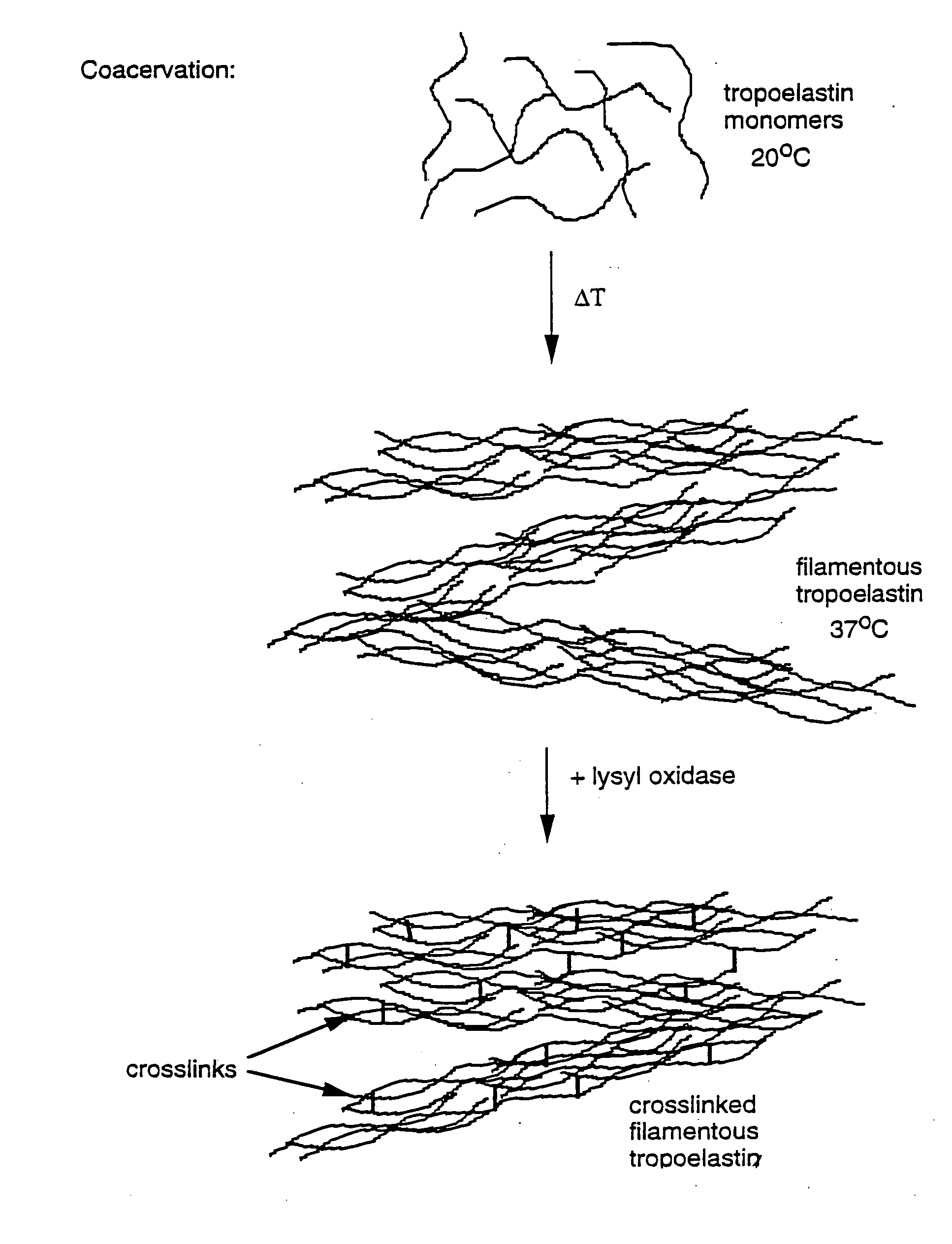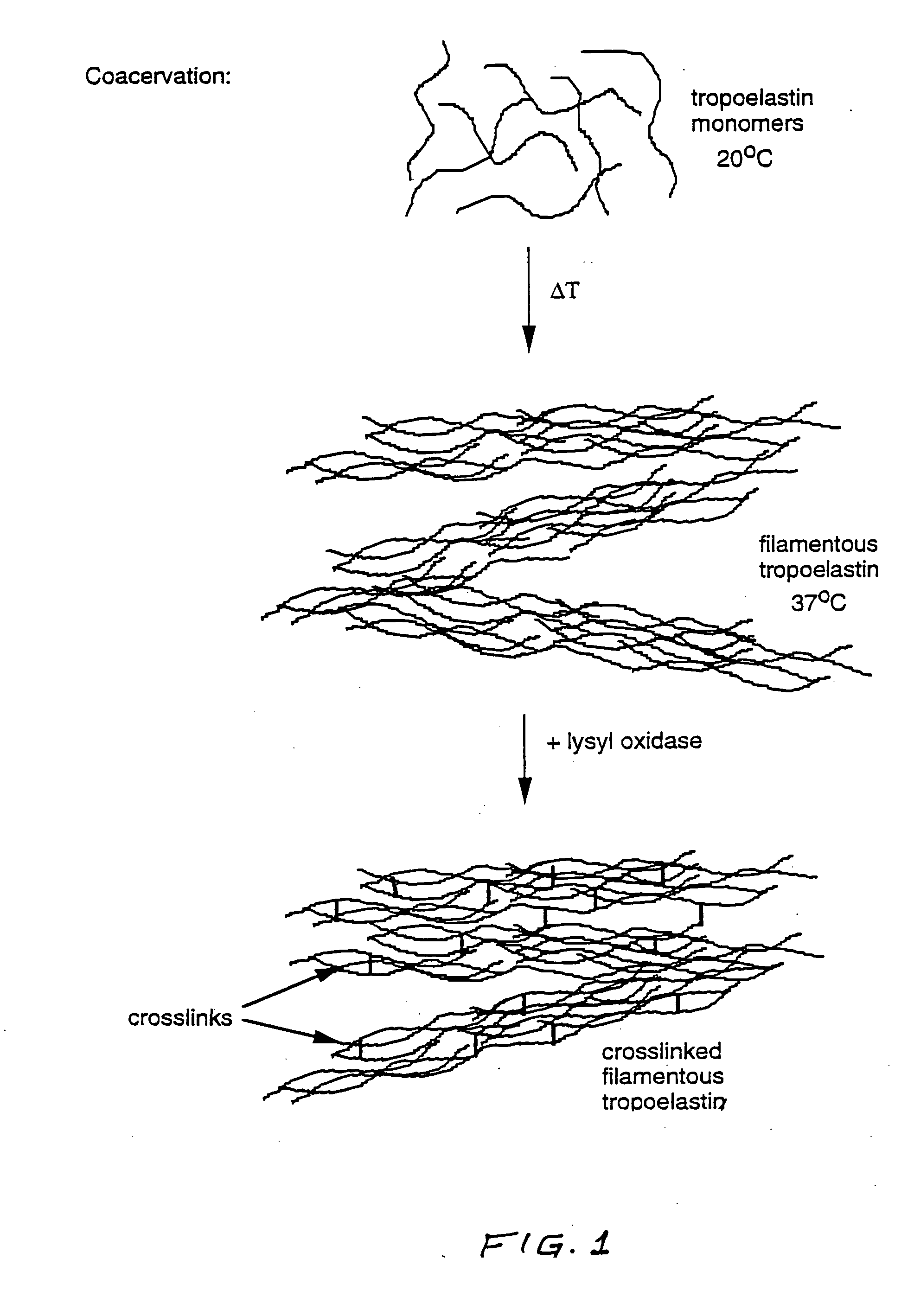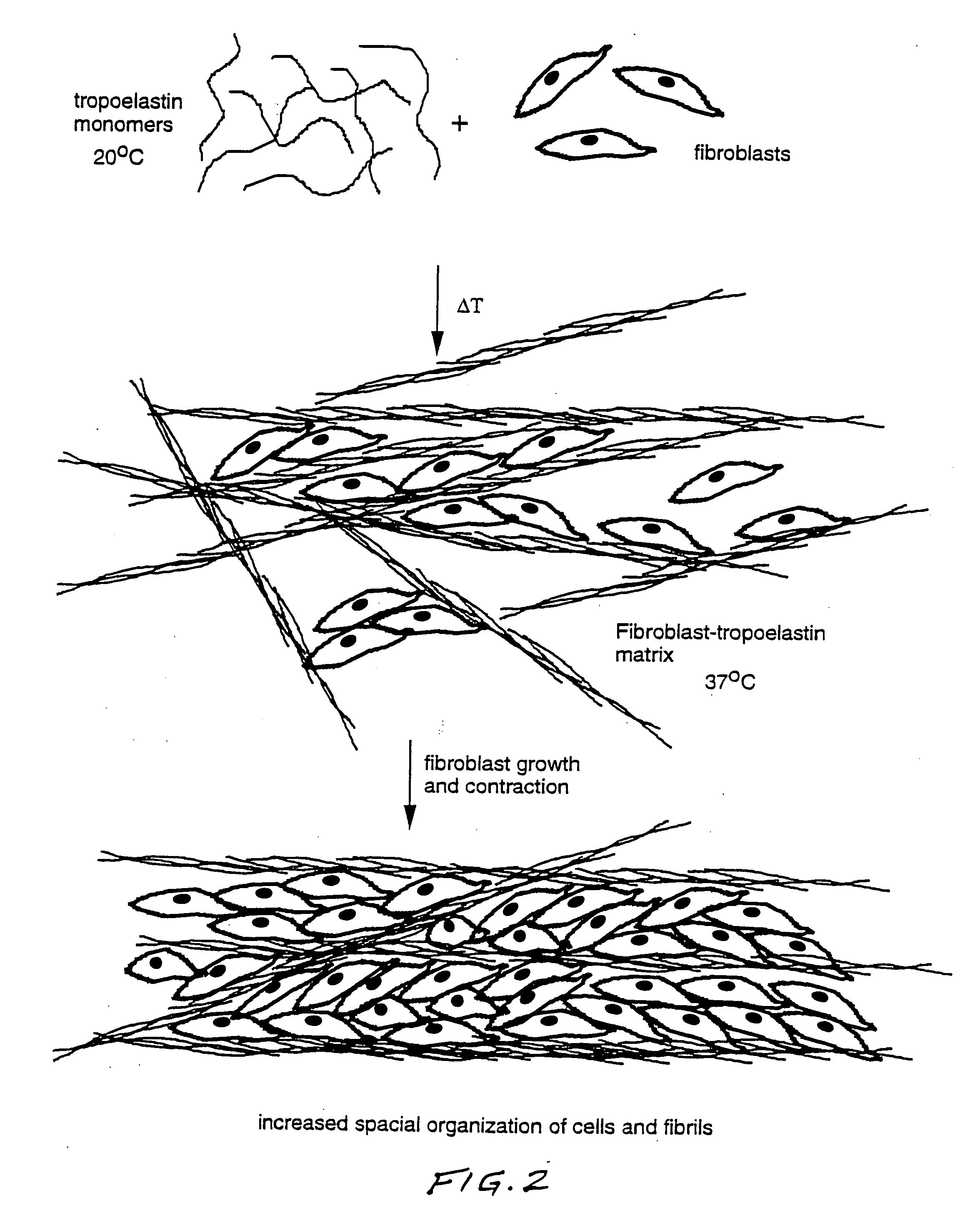Method for using tropoelastin and for producing tropoelastin biomaterials
a biomaterial and tropoelastin technology, applied in the field of tropoelastin biomaterials production, can solve the problems of thrombotic closure, catastrophic lumen restnosis or closure, inconvenient use, etc., and achieve the effect of reducing the need for systemic intravenous or oral medications
- Summary
- Abstract
- Description
- Claims
- Application Information
AI Technical Summary
Benefits of technology
Problems solved by technology
Method used
Image
Examples
Embodiment Construction
Monomer Synthesis
[0048] Tropoelastin monomer is the soluble biosynthetic precursor to elastin. It is formed naturally in vetebrates. Tropoelastin can be isolated from the aortas of copper deficient swine by known methods such as described by E. B. Smith, Atherosclerosis 37 (1980) tropoelastin is a 72-kDa polypeptide which is rich in glycine, proline, and hydrophobic amino acids. The exact amino acid composition of tropoelastin differs from species to species. Any polypeptide moiety that has art-recognized homology to tropoelastin can be considered a tropoelastin monomer for the invention.
[0049] The tropoelastin can be isolated from mammalian tissue or produced using recombinant expression systems. Furthermore, tropoelastin splice variants from any species can also be used for the invention.
[0050] The following are exemplary descriptions of methods of producing tropoelastin monomers used in the invention:
[0051] 1. Tropoelastin can be extracted from mammals which have been placed ...
PUM
| Property | Measurement | Unit |
|---|---|---|
| thickness | aaaaa | aaaaa |
| pH | aaaaa | aaaaa |
| temperature | aaaaa | aaaaa |
Abstract
Description
Claims
Application Information
 Login to View More
Login to View More - R&D
- Intellectual Property
- Life Sciences
- Materials
- Tech Scout
- Unparalleled Data Quality
- Higher Quality Content
- 60% Fewer Hallucinations
Browse by: Latest US Patents, China's latest patents, Technical Efficacy Thesaurus, Application Domain, Technology Topic, Popular Technical Reports.
© 2025 PatSnap. All rights reserved.Legal|Privacy policy|Modern Slavery Act Transparency Statement|Sitemap|About US| Contact US: help@patsnap.com



